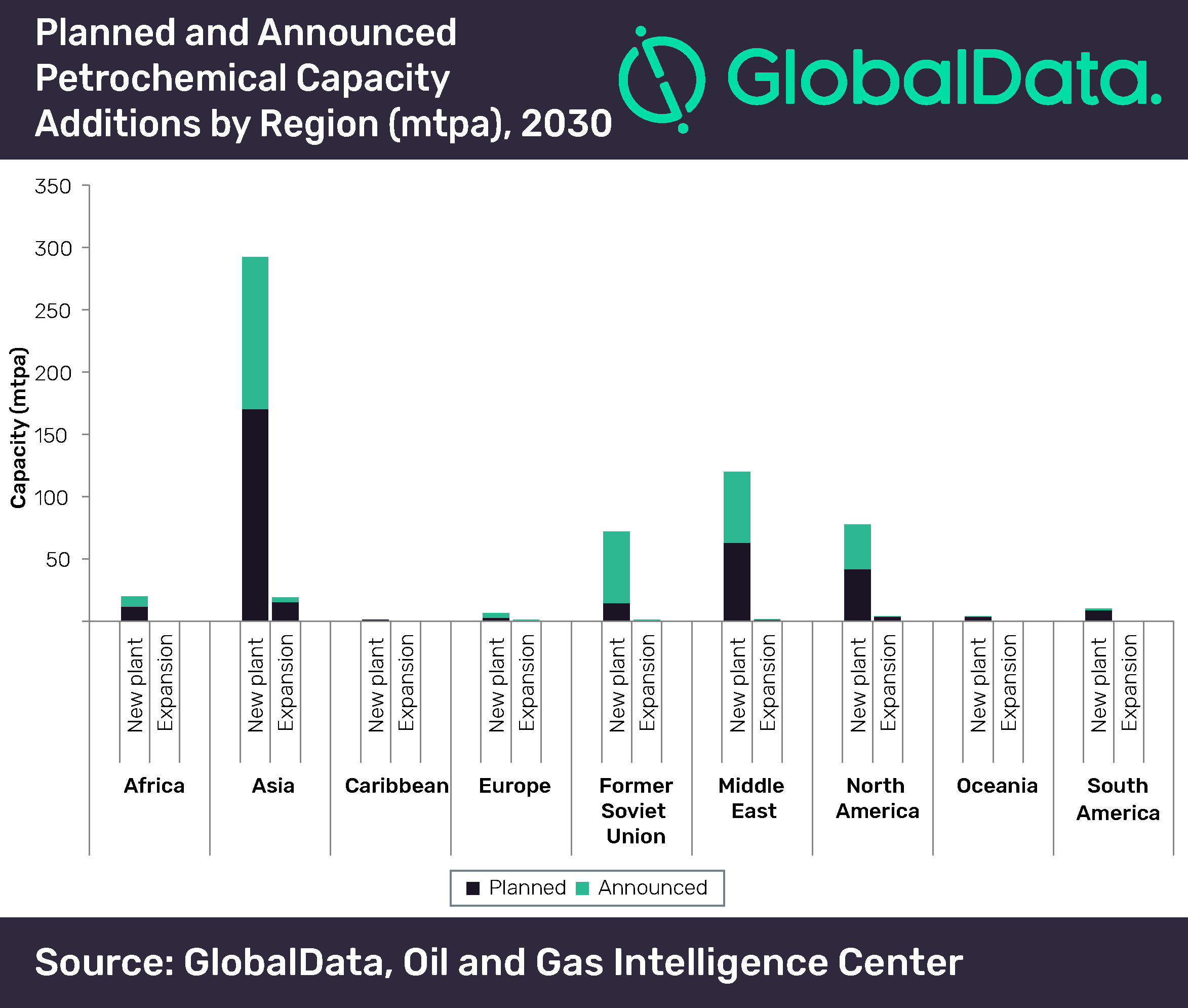Asia is expected to lead the global petrochemical industry capacity growth from new-build and expansion projects between 2019 and 2030 with 50 percent share, according to GlobalData, a leading data and analytics company.
The company’s report ‘H2 2019 Global Petrochemicals Capacity and Capital Expenditure Outlook – China Leads Global Petrochemical Capacity Additions’ reveals that the total petrochemical capacity of new-build and expansion projects in Asia is expected to be 311.4 million tonnes per annum (mtpa) by 2030. Of this capacity addition, 292.3 mtpa will come from new-build projects and the remaining 19.1 mtpa will come from expansion projects.
Dayanand Kharade, Oil and Gas Analyst at GlobalData, explains: “Asia will continue to dominate the global petrochemicals market with both the biggest number of new projects and the largest absolute capacity expansion driven by growing economies in the region i.e., China and India.”

The Middle East is expected to have the second highest petrochemical capacity additions globally, behind Asia. The region contributes about 121.2 mtpa of the total global new-build and expansion petrochemical capacity additions by 2030. Major capacity additions for the Middle East will be from Iran, with a new-build and expansion capacity additions of 75.9 mtpa, by 2030.
North America stands third, with new-build and expansion petrochemical capacity of 81.2 mtpa by 2030. Of these, most of the petrochemical capacity additions will come from new-build projects.
About GlobalData
4,000 of the world’s largest companies, including over 70% of FTSE 100 and 60% of Fortune 100 companies, make more timely and better business decisions thanks to GlobalData’s unique data, expert analysis and innovative solutions, all in one platform. GlobalData’s mission is to help our clients decode the future to be more successful and innovative across a range of industries, including the healthcare, consumer, retail, technology, energy, financial and professional services sectors.




